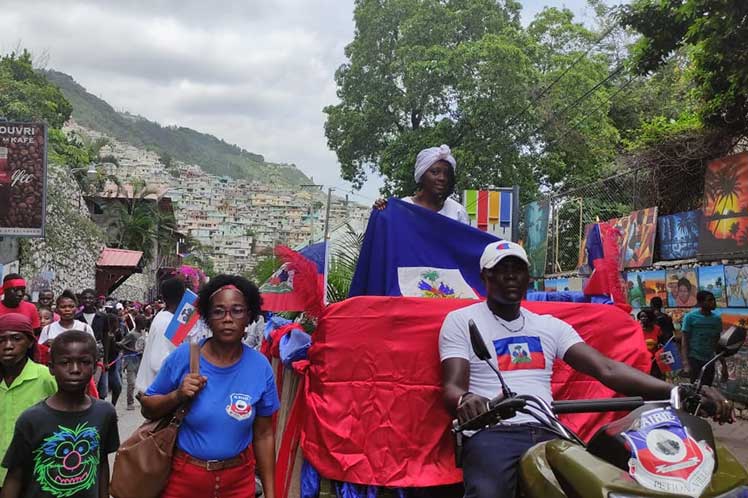Marked by the legend, the story goes that Jean Jacques Dessalines, who later became an emperor, held a rally on May 18 behind the Arcahie Congress, where revolutionary leaders who were then fighting in separate fronts agreed to fight for independence.
Nurse and military strategist Chaterine Flon, whose remains rest in the Haitian Heroes Pantheon, sewed the blue and red sections, put them in a vertical position and added the slogan “Freedom or Death.” Then the flag was born, as an example of the resistant and fighting nature of an oppressed people.
“To the eyes of the black masses, the tricolor symbolized the union of the three classes during colonial times: the white, the mixed race and the blacks. In a quick move, Dessalines eliminated the white,” researcher Elmide Méléance said in her book Revolutionary freedoms: a history of survival, strength and imagination in Haiti.
Throughout its more than two centuries, the flag has had at least seven changes. Shortly after it was made in Arcahie, after the declaration of independence, the stripes returned to a horizontal position, and after Dessalines’s proclamation as emperor the blue stripe was replaced by a black one.
Patriot Alexander Petion, who took power in the country’s southern region after Jean Jacques’s assassination, replaced the blue and the red of 1804 and added the phrase “Unity is strength”, along with the white square in which the Republic’s arms appeared.
In the north, however, self-proclaimed King Henri Christophe adopted his own flag until he committed suicide in 1820. During the François and Jean Claude Duvalier dictatorships, it again underwent changes.
Today’s flag, made official in 1986 after Duvalier’s downfall and ratified by the Constitution the following year, is the same one that waved during the presidency of Petion, the founding father of the first Republic.
Last May, on the occasion of festivities marking the anniversary of the flag, Prime Minister Ariel Henry recalled that its origin was the result of national consensus, which should inspire all citizens to do away with divisions and rediscover the spirit of unity for the sake of national stability.
Taken from Orbe
By Anelí Ruiz García,
Chief Correspondent/Port-au-Prince
jg










